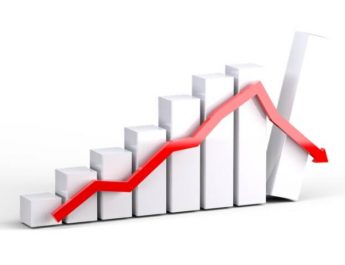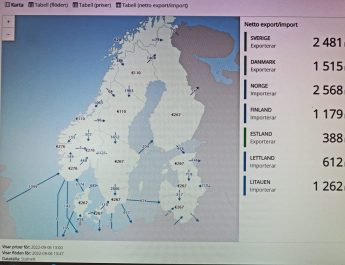With the Ukraine war now reaching its one-year mark on February 24, the Russians have not achieved a military victory but neither has the West achieved its goals on the economic front. When Russia invaded Ukraine, the United States and its European allies vowed to impose crippling sanctions that would bring Russia to its knees and force it to withdraw.
Western sanctions would erect a new Iron Curtain, hundreds of miles to the east of the old one, separating an isolated, defeated, bankrupt Russia from a reunited, triumphant and prosperous West. Not only has Russia withstood the economic assault, but the sanctions have boomeranged–hitting the very countries that imposed them.
Western sanctions on Russia reduced the global supply of oil and natural gas, but also pushed up prices. So Russia profited from the higher prices, even as its export volume decreased. The International Monetary Fund (IMF) reports that Russia’s economy only contracted by 2.2% in 2022, compared with the 8.5% contraction it had forecast, and it predicts that the Russian economy will actually grow by 0.3% in 2023.
On the other hand, Ukraine’s economy has shrunk by 35% or more, despite $46 billion in economic aid from generous U.S. taxpayers, on top of $67 billion in military aid.
European economies are also taking a hit. After growing by 3.5% in 2022, the Euro area economy is expected to stagnate and grow only 0.7% in 2023, while the British economy is projected to actually contract by 0.6%. Germany was more dependent on imported Russian energy than other large European countries so, after growing a meager 1.9% in 2022, it is predicted to have negligible 0.1% growth in 2023. German industry is set to pay about 40% more for energy in 2023 than it did in 2021.
The United States is less directly impacted than Europe, but its growth shrank from 5.9% in 2021 to 2% in 2022, and is projected to keep shrinking, to 1.4% in 2023 and 1% in 2024. Meanwhile India, which has remained neutral while buying oil from Russia at a discounted price, is projected to maintain its 2022 growth rate of over 6% per year all through 2023 and 2024. China has also benefited from buying discounted Russian oil and from an overall trade increase with Russia of 30% in 2022. China’s economy is expected to grow at 5% this year.
Other oil and gas producers reaped windfall profits from the effects of the sanctions. Saudi Arabia’s GDP grew by 8.7%, the fastest of all large economies, while Western oil companies laughed all the way to the bank to deposit $200 billion in profits: ExxonMobil made $56 billion, an all-time record for an oil company, while Shell made $40 billion and Chevron and Total gained $36 billion each. BP made “only” $28 billion, as it closed down its operations in Russia, but it still doubled its 2021 profits.
As for natural gas, U.S. LNG (liquefied natural gas) suppliers like Cheniere and companies like Total that distribute the gas in Europe are replacing Europe’s supply of Russian natural gas with fracked gas from the United States, at about four times the prices U.S. customers pay, and with the dreadful climate impacts of fracking. A mild winter in Europe and a whopping $850 billion in European government subsidies to households and companies brought retail energy prices back down to 2021 levels, but only after they spiked five times higher over the summer of 2022.
While the war restored Europe’s subservience to U.S. hegemony in the short term, these real-world impacts of the war could have quite different results in the long term. French President Emmanuel Macron remarked, “In today’s geopolitical context, among countries that support Ukraine, there are two categories being created in the gas market: those who are paying dearly and those who are selling at very high prices… The United States is a producer of cheap gas that they are selling at a high price… I don’t think that’s friendly.”
An even more unfriendly act was the sabotage of the Nord Stream undersea gas pipelines that brought Russian gas to Germany. Seymour Hersh reported that the pipelines were blown up by the United States, with the help of Norway—the two countries that have displaced Russia as Europe’s two largest natural gas suppliers. Coupled with the high price of U.S. fracked gas, this has fueled anger among the European public. In the long term, European leaders may well conclude that the region’s future lies in political and economic independence from countries that launch military attacks on it, and that would include the United States as well as Russia.
The other big winners of the war in Ukraine will of course be the weapons makers, dominated globally by the U.S. “big five”: Lockheed Martin, Boeing, Northrop Grumman, Raytheon and General Dynamics. Most of the weapons so far sent to Ukraine have come from existing stockpiles in the United States and NATO countries. Authorization to build even bigger new stockpiles flew through Congress in December, but the resulting contracts have not yet shown up in the arms firms’ sales figures or profit statements.The Reed-Inhofe substitute amendment to the FY2023 National Defense Authorization Act authorized “wartime” multi-year, no-bid contracts to “replenish” stocks of weapons sent to Ukraine, but the quantities of weapons to be procured outstrip the amounts shipped to Ukraine by up to 500 to one. Former senior OMB official Marc Cancian commented, “This isn’t replacing what we’ve given [Ukraine]. It’s building stockpiles for a major ground war [with Russia] in the future.”
Since weapons have only just started rolling off production lines to build these stockpiles, the scale of war profits anticipated by the arms industry is best reflected, for now, in the 2022 increases in their stock prices: Lockheed Martin, up 37%; Northrop Grumman, up 41%; Raytheon, up 17%; and General Dynamics, up 19%…
Läs mer:
- Who’s Winning and Losing the Economic War Over Ukraine? – by Medea Benjamin – Nicolas J. S. Davies – counterpunch.org, 23 februari 2023


